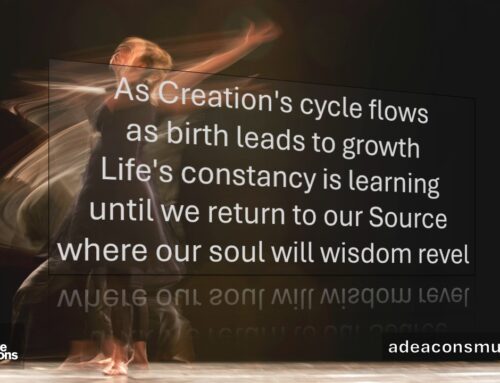34 Then Jesus said, “Father, forgive them; for they do not know what they are doing.” And they cast lots to divide his clothing. 35 And the people stood by, watching; but the leaders scoffed at him, saying, “He saved others; let him save himself if he is the Messiah of God, his chosen one!”
In the passage above, Jesus is being executed by the slow torture of crucifixion. This heart-wrenching scene of unimaginable pain is often used to explore the Christian concept of forgiveness. As Jesus suffers the slow agonising death of asphyxiation, he calls upon Creator to care for those who are either unaware of the suffering in their midst or, as in the case of the soldiers at the base of the cross, complicit.
That this scene is about forgiveness is certainly well-established in the Christian tradition. In the case of this exploration about leadership, I want to focus on forgiveness as compassion. Compassion, explored as an act to offer and/or receive forgiveness, draws together well the previous two blogs in this Righteous Leadership series: Humility and Listening and Learning.
I have been considering what compassion means currently when our suffering and Creation’s moans are clear. Such dis-ease is apparent in the oppression and marginalisation we inflict on ourselves and one another. We live in a time where we are systemically removed from community, from one another. We find ourselves lonely, isolated, and unable to find ways to care for ourselves, let alone one another. What does compassion mean in such an environment when we are indoctrinated to find validation by what we consume, not who we are or how we are in the world? In this climate, what does a call to the discipline of leadership mean?
To recognise the suffering in ourselves and one another, as I think Jesus’ suffering and impassioned plea makes clear, is not easy. Humble leadership is able to let go of suffering, while being able to name and witness it. By not being bound or stuck in our or to others suffering, humble leadership, through the disciplines of listening deeply to others and learning from them, is where the practice of being compassion begins. To breath in the suffering and yet to exhale the opposite – love – is quintessential compassionate Christian leadership. In this act of letting go of control, such righteous leadership models something very different from the world’s form of leadership in which might makes right.
Now lest you think this final component in this current leadership exploration – compassion – is ‘soft’ or ‘passive,’ I invite us to hold on to the image in Luke. This form of leadership requires active engagement in this human world of frailty and ego. It requires us to learn how to advocate for justice, to resist the systems that tend to trample and oppress, and to, ultimately, be compassion.
To resist as a righteous leader is to subvert the forms of hierarchy, privilege, and authoritarianism in a manner that reminds all people of their inherent worth, their intrinsic dignity, and their blessed being. In this orientation, as we take in the hurt of the world and release it transformed as love, literally incarnate as Jesus models, we may find ourselves tested. This testing can lead back, full circle, to humility.
To witness and lead in the midst of inequality and the seeming never-ending-reality of oppression is not only overwhelming, but also the temptation to fight back is real. Returning like-energy-for-like, however, simply serves to reinforce the paradigm of how we, as humans, have constructed systems of power. Replacing one oppression for another, ultimately, simply means we all remain in the roles of oppressed and oppressor. In this place of tension for Christian disciples, knowing where our centre is, ego of the self or the confidence of faith, forces us to ask how we respond when the test arrives?
For each Christian disciple, how one responds will depend on context, place, and time. There is no cookie-cutter playbook, no blueprint, but there is the model that Jesus offers and many since then have called the third way. This alternative, Jesus’ choice to live the full implication of compassionate leadership, can lead to death. But the very fact I am writing this, you are reading this, and we can converse about it illustrates that this third way has remained vibrant for millennia. In the Christian tradition, this might even be considered resurrection.
Jesus could have, as is clear during his arrest in Gethsemane prior to his trial and eventual execution, embraced the ways of the world and fought back with the sword, as opposed to resist with compassion. He could have allowed his ego to confront the oppression he knew was the constant outcome of human political systems, but instead he embraced his fate. Emboldened by the choices and their inevitability of Jesus’ choices, he breathes out love and compassion, as a final prayer of forgiveness to God on the cross.
Such leadership is not easy, but the burden of it is released when we are able to recognise that righteous leadership is not about us. It is about Creator that, lovingly, with and through us, confronts systems that subjugate with alternative ways of being that liberate. This liberation, in which we are all invited to participate, is about beauty and abundance. In the listening – witnessing of stories of challenge and trauma – such leadership prepares people to offer back gifts of healing for all to so shine. Compassionate leadership is, in the end, about living into being a beacon of light that shines in the shadows that obscure us from one another, from God. Such leadership is the journey into letting go and letting in the Holy. In this release of self and Spirit-filling, the awful nature of being a spark divine allows us to blaze, and that is Good News …








Your reflections are most welcome!